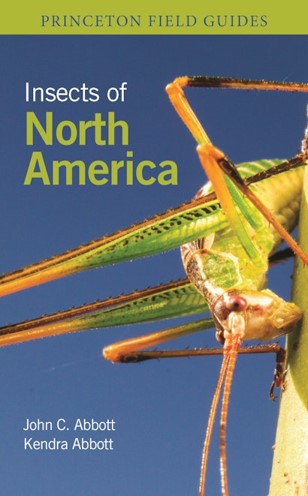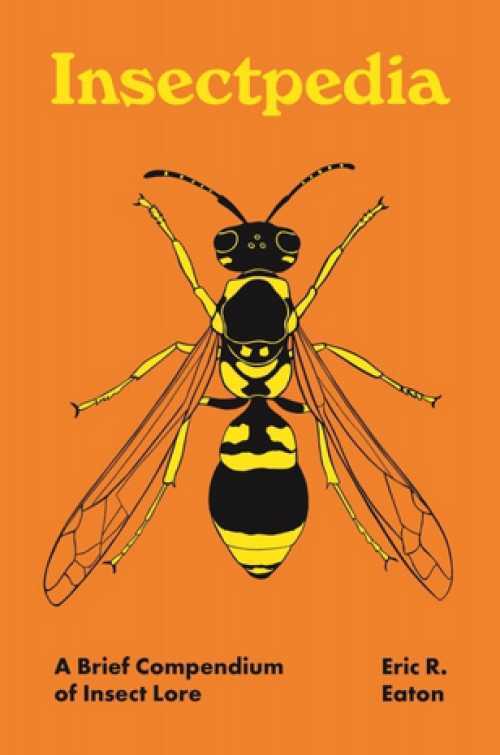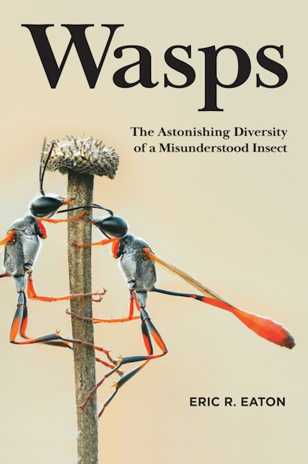Insects of North America
by John C. Abbott & Kendra K. Abbott
- Book Review
How do you create a field guide to help ecologists, entomologists,
and even backyard naturalists with the identification of all 92,000 known species
of insect found on the world’s third largest continent?
The answer is, to follow the approach taken by John & Kendra Abbott, authors of ‘Insects of North America’, who have created an outstanding field guide.
John C. Abbott is chief curator and director of research and collections for the University of Alabama, while Kendra K. Abbott is an ecologist and science curator at the same university (they are also the authors of ‘Common Insects Of Texas And Surrounding States’).

This superb guide is essentially a comprehensive description of, and aid to, the identification of the 783 insect families currently recognized in North America. This approach makes perfect sense. After all, we first learn to identify an insect by recognising the broader group to which it belongs (beetles, butterflies and moths, bees and wasps, dragonflies and damselflies etc). We can then refine our knowledge further if we wish, and as the authors point out, excellent species-specific guides are already available.
The book starts with some basic essential stuff: what is an insect?; and useful background about species classification and nomenclature.
There then follows detailed advice and instruction on studying insects in the field, and in particular, an important section regarding ‘Ethics & Responsible Collecting’ and ‘The Insect Collector’s Code’. Regular readers of my website will know I have ‘a bee in my bonnet’ about the irresponsible collecting of bees and other insects, so I was genuinely pleased to see that the authors encourage the reader to be humane, and to first consider their ultimate intentions with their collections – in short, to follow the Collector’s Code as outlined.
The authors also draw attention to the fact that a ’great way to learn about insects and other arthropods is to keep them alive’ and that ‘Photographing insects is yet another great way to enjoy them’, and practical advice is provided for both.
The guide is then set out in color-coded sections for 31 insect orders (Ephemeroptera (mayflies); Hymenoptera (bees, wasps, sawflies, ants) etc). Each of these sections starts with an introduction to the insect order, giving the derivation of the name along with information about classification and range. This is followed by an indication of food, behaviour, life cycle, importance to humans, useful further resources, and excellent colored anatomical illustrations. Identification keys are also provided (for example, for beetles (Coleoptera) there are 7 keys in total, plus silhouettes of beetle superfamilies).
Further detail about the superfamilies is then provided, and supplemented with superb photographs of representative species.
Finally, there is a section on non-insect arthropods, and a detailed and illustrated glossary of terms for the novice.
At almost 600 pages, this book provides a very substantial amount of invaluable information, yet it is exceedingly user-friendly and pleasingly compact (even the inside front cover provides an attractive color key to Hexapods, whilst the rear provides a color guide to head morphology, spider morphology and antennae types!).
In summary, the authors have provided an essential field guide for professional and amateur entomologist alike. A big thumbs up from me, and definitely recommended!
Insects of North America John C Abbott & Kendra K Abbott
Princeton University PressISBN: 978-0-691-23285-0
BuzzAboutBees.net is a member of the Amazon Associates Program.
As an Amazon Associate I earn from qualifying purchases if you click on a link from my website to an Amazon website page. I only recommend books and goods I myself like. Further information, see: Advertising And Affiliates Disclosure.
If you found this page helpful or interesting, I'd really be grateful if you would share it with others - if not this page, perhaps another, such as Gardening For Bees.
Thank you so much :) .

